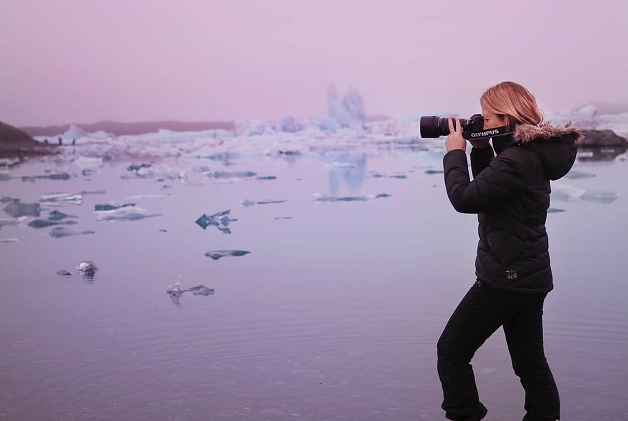Getting Started With Travel Photography: How to take better Travel Photos

Introduction
Travel photography is an art that combines exploration and creativity, allowing you to capture stunning memories of your adventures. Whether you’re an aspiring professional or simply wish to enhance your skills for personal enjoyment, getting started with travel photography can be a rewarding journey. This guide provides essential tips, equipment recommendations, and expert techniques to help you create captivating images wherever your travels take you.
Why Travel Photography?
Travel photography offers numerous benefits beyond just capturing beautiful images:
- Storytelling: Share your experiences and immerse viewers in the places you’ve visited.
- Creative Expression: Experiment with composition, light, and colors to bring scenes to life.
- Cultural Connection: Build a deeper understanding of the world through your lens.
- Personal Growth: Improve your technical skills while exploring new perspectives.
Essential Gear for Travel Photography
To excel in travel photography, you need the right equipment. Here’s a breakdown:
| Gear | Why It’s Important |
|---|---|
| Camera (DSLR or Mirrorless) | Offers control over settings and captures high-quality images. |
| Lenses | Wide-angle for landscapes, zoom for distant subjects, and prime for portraits. |
| Tripod | Ideal for night photography or stable long exposures. |
| Filters | Polarizers enhance skies; ND filters are great for water and clouds. |
| Extra Batteries & SD Cards | Ensure you don’t miss a moment due to low battery or storage. |
| Protective Gear | Waterproof cases or bags to shield your equipment in harsh weather. |
Understanding the Basics of Travel Photography
1. Mastering Composition
The composition of your photo determines its impact. Use these techniques:
- Rule of Thirds: Divide your frame into nine equal parts and place your subject at the intersections.
- Leading Lines: Guide the viewer’s eye with natural or man-made lines like roads or rivers.
- Framing: Use natural elements such as windows, doorways, or trees to frame your subject.
2. Playing With Lighting
Lighting is the essence of photography.
- Golden Hour: Shoot during sunrise or sunset for soft, warm tones.
- Midday Challenges: Use shadows creatively to add drama to your photos.
- Night Photography: Stabilize your camera and experiment with long exposures for cityscapes or star trails.
3. Capturing Motion
- Freezing Action: Use a fast shutter speed to capture moving subjects like wildlife or vehicles.
- Creating Motion Blur: Slow your shutter speed to depict movement, such as waterfalls or bustling streets.
How to Prepare for Travel Photography
1. Research Your Destination
- Explore iconic landmarks and hidden gems.
- Understand the local culture and traditions to capture authentic moments.
- Check weather conditions to plan your shoots accordingly.
2. Pack Smart
- Prioritize lightweight, versatile gear.
- Use padded compartments in your bag for safety.
- Carry a cleaning kit for your lenses and camera body.
3. Stay Organized
- Categorize your SD cards and label them by date or location.
- Back up your images daily on external drives or cloud storage.
- Plan your itinerary with photography locations and time slots in mind.
Types of Travel Photography
1. Landscape Photography
Showcase the beauty of nature by capturing vast mountain ranges, serene beaches, or lush forests.
- Use a wide-angle lens for expansive views.
- Incorporate foreground elements to create depth.
2. Street Photography
Capture the essence of urban life through candid moments.
- Be discreet and respectful while photographing people.
- Experiment with shadows, reflections, and vibrant colors.
3. Wildlife Photography
Photographing animals in their natural habitats is both challenging and rewarding.
- Use a telephoto lens to maintain a safe distance.
- Stay patient and observant to capture unique behavior.
4. Architectural Photography
Highlight the design and details of buildings, monuments, and cultural landmarks.
- Use a tilt-shift lens to minimize distortion.
- Shoot during the blue hour for dramatic lighting.
5. Portrait Photography
Tell a story through the faces of locals or fellow travelers.
- Build a rapport before taking someone’s photo.
- Use a prime lens for sharp, focused portraits.
Post-Processing Tips for Travel Photos
Editing enhances the quality of your images and brings your creative vision to life.
1. Use Editing Software
- Lightroom: Ideal for adjusting exposure, colors, and tones.
- Photoshop: Perfect for detailed edits like removing distractions or enhancing textures.
2. Enhance Colors and Contrast
- Boost saturation to make colors pop but avoid over-editing.
- Adjust contrast for a more dynamic look.
3. Crop and Straighten
- Remove unnecessary elements to focus on the subject.
- Straighten horizons to avoid visual imbalance.
4. Export for Different Platforms
- Save high-resolution images for prints.
- Use optimized sizes for social media platforms to maintain quality.
Sustainable Practices in Travel Photography
As a travel photographer, you have a responsibility to preserve the environment and respect local communities.
1. Leave No Trace
- Avoid littering and damaging natural habitats.
- Stay on designated paths and trails.
2. Respect Privacy
- Always ask for permission before photographing people.
- Be mindful of cultural sensitivities regarding cameras.
3. Support Local Economies
- Use local guides and purchase souvenirs directly from artisans.
- Share your images to promote sustainable tourism initiatives.
Common Mistakes to Avoid in Travel Photography
1. Overpacking Gear
Carrying too much equipment can weigh you down and make you miss spontaneous moments.
2. Ignoring Camera Settings
Relying on auto mode limits your creative potential. Learn to use manual settings.
3. Shooting Without a Plan
While spontaneity is essential, having a loose plan ensures you capture must-see locations.
4. Failing to Backup Images
Always carry an external hard drive or use cloud storage to avoid losing your work.
5. Disrespecting Locals or Wildlife
Remember that your presence should not disrupt the environment or community you’re photographing.
FAQs About Travel Photography
1. What camera is best for beginners in travel photography?
Mirrorless cameras like the Sony Alpha series or DSLRs such as the Canon EOS Rebel series are excellent for beginners.
2. How can I improve my travel photography skills?
Practice regularly, study photography composition techniques, and learn from online tutorials or workshops.
3. Is a smartphone good enough for travel photography?
Modern smartphones with advanced cameras can capture stunning images. However, dedicated cameras provide greater flexibility.
4. How do I take great travel photos in crowded places?
Focus on details, use a higher vantage point, or shoot early in the morning to avoid crowds.
5. What’s the best way to share my travel photos?
Social media platforms like Instagram or travel blogs are great for showcasing your work and connecting with an audience.
6. Should I watermark my travel photos?
If you’re sharing your work professionally, adding a subtle watermark can help protect your images.
7. How do I find inspiration for travel photography?
Research travel photographers, explore social media, and immerse yourself in the culture of your destination.
Conclusion
Getting started with travel photography is an enriching experience that combines adventure, creativity, and storytelling. By equipping yourself with the right gear, mastering techniques, and adopting sustainable practices, you can capture moments that inspire and connect people. Whether you’re photographing landscapes, street scenes, or portraits, every image becomes a testament to the beauty of exploration.
Embrace the journey, hone your craft, and let your lens tell the stories of the world.


